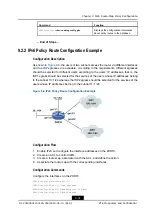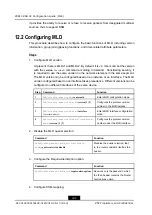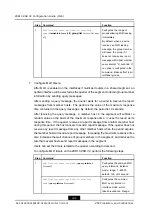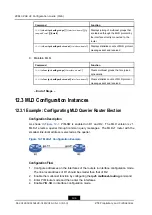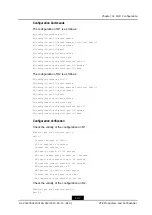
Chapter 10 IPv6 Multicast
When IPv6 PIM sends a protocol message (such as PIM Hello, Join-Prune, Assert,
Bootstrap, Graft, Graft-Ack or State-refresh) of link-local range, the source IPv6
address of the message is the link-local address on the interface that sends
the message.
When IPv6 PIM sends a protocol message (such as Register,
Register-Stop or C-RP Advertisement), the source IPv6 address of the message is
the global unicast address on the interface that sends the message.
IPv6 multicast does not support Multicast Source Discovery Protocol (
). There
are two ways to receive multicast data from other IPv6 PIM domains.
a.
One way is to obtain the multicast source addresses in other IPv6 PIM domains
directly through other modes (such as advertisement) and use IPv6 PIM-SSM to
initiate joins of specific source groups.
b.
The other way is to use the embedded Rendezvous Point (
) mechanism. The
device can obtain the RP addresses in other IPv6 PIM domains through the IPv6
multicast addresses with embedded RP addresses, and initiate joins to the RPs
in other domains. To deliver inter-domain IPv6 multicast routing information, IPv6
MBGP can be used, which is similar to IPv4 MBGP.
10.2 Configuring Public IP Multicast
This procedure describes how to configure public multicast.
Steps
1.
Configure public IP multicast.
Step
Command
Function
1
ZXR10(config)#
ipv6 multicast-routing
Enables IPv6 multicast function.
2
ZXR10(config-mcast-ipv6)#
router pim
Enters PIM mode.
2.
Configure a restriction on the number of entries in the multicast forwarding table.
Command
Function
ZXR10(config-mcast-ipv6)#
mroute6-limit
<
limit
>
Restricts the number of entries in
the multicast forwarding table. By
default, the maximum value allowed
by the system is used.
3.
Configure multicast damping.
Step
Command
Function
1
ZXR10(config-mcast-ipv6)#
damping-enable
Enables damping.
10-3
SJ-20140504150128-018|2014-05-10 (R1.0)
ZTE Proprietary and Confidential







